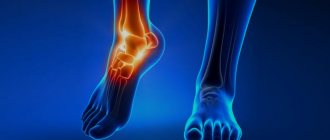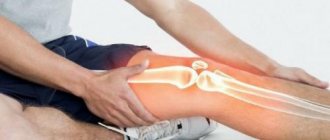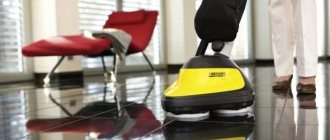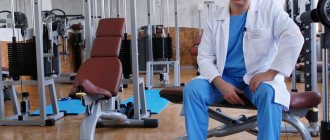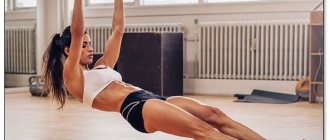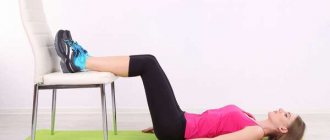Other useful exercises
Jumping rope is no less beneficial for the joint.
If the victim is not bothered by severe pain and the functionality of the limb is not impaired, it is recommended to jump rope every day to strengthen the musculo-ligamentous system of the ankle. But you should be careful if you are overweight or have been diagnosed with degenerative diseases. Self-massage of the feet will help normalize blood circulation and nutrition of the ankle joint, thanks to which the muscles and ligaments will recover in a short time. Uneven surfaces have a massage effect, so in case of problems with the musculoskeletal system, patients are often recommended to move on the following surfaces:
- straw or grass mat;
- bamboo mat;
- cork slab;
- sand and small pebbles.
If a person has received a serious injury, after which fractures, including the ankle, have been diagnosed, in the late rehabilitation period for training it is recommended to use a multifunctional simulator to develop the ankle joint, as well as the lower and upper extremities
But in this case, the training should be supervised by a trainer, because it is important to perform the exercises correctly and evenly distribute the load on the affected areas
Foot exercises for runners
A set of exercises from Dmitry and Ekaterina Mityaev - leaders of trail running in Russia and founders of the trail running school.
The exercises are based on jumping on your feet; to perform them you will need a step platform or other stable platform. The amount and duration of exercise is individual for everyone. When performing exercises, push off with your feet without involving other muscles. This set of exercises can be performed on a flat surface, but the load and effectiveness will be less.
Additional exercises with objects
If you're looking for more challenging ways to strengthen your ankle after an injury, try doing exercises with different objects. Remember that such loads are allowed in the later stages of recovery from an ankle injury.
Collecting Items
You will need small objects that you can grab with your toes. These could be buttons or pebbles, small toys or balls. We also need a container where we will collect these items.
We scatter the equipment on the floor. We sit on a chair and try to grab objects with the toes of one foot, then the second or both at once, and transfer them to the prepared container.
You can increase the load if you perform the movements while standing on one leg. At the same time, not only the ligamentous, but also the vestibular apparatus is trained.
Ball exercises
For training you will need a regular ball. It’s good if there are several of them and of different sizes.
The ball can:
- roll with the sole of one foot;
- grab with both feet at the same time and lift;
- move from place to place with your feet.
If possible, kick the ball with your feet, play football, and kick it into the goal. Such movements perfectly train the muscles of the lower leg and ankle tendons.
Just take precautions to avoid re-injuring your leg.
Exercises with a jump rope
Jumping rope perfectly strengthens the ankle joint. You can jump on your toes or
Such training can only be carried out in sports shoes and by choosing the correct length of the rope. Keep in mind that people with severe obesity, problems with the spine and knees are strictly prohibited from jumping.
How much time to devote to such jumps is determined by the condition of the joints, as well as the pulse. Do not allow the number of heart beats to exceed 120 during exercise.
Workouts with an elastic band
An ordinary elastic bandage from the pharmacy is a great device to increase the load on the ankle during training.
Using this device you can perform the following exercises:
- Place your feet together and wrap them with a bandage. Without lifting your heels, try to stretch the bandage by spreading your toes to the sides.
- Cross your legs and place the backs of your feet together. Wrap them with a bandage again and spread your socks apart.
- Make a loop out of the bandage by looping it around the table leg. Place one leg into it and stretch the bandage in different directions: back, to the sides. Switch legs and repeat the movements.
- Place the loop behind the chair leg. Sitting on a chair, place both legs in the loop. Stretch the bandage by moving your limbs forward. Do the exercise with one leg, then the other.
In addition to such simple devices, you can also use professional ones. For example, exercise on a steppe, exercise bike, stepper.
Sources
- https://anisima.ru/ukreplenie-golenostopa/
- https://med-shkola.ru/artroz/uprazhneniya-pri-artroze-golenostopnogo-sustava.html
- https://FitNavigator.ru/zdorove/kak-ukrepit-golenostop.html
- https://NogoStop.ru/golenostop/bolezni/uprazhneniya-dlya-golenostopa.html
- https://SustavKoleni.ru/lfk-massazh-reabilitatsiya-pri-travmah-stop/ukrepit-svyazki-golenostopa.html
What a runner needs to know about the ankle
Achilles is an invincible brave warrior who was killed by an arrow that hit him in the heel. This was his only weak spot. Runners are also very vulnerable in the ankle area, and in particular the Achilles tendon.
The ankle includes joints that provide mobility to the foot. It is these ligaments and tendons that are most vulnerable when running. Initially, all of them are not well developed and are not designed for excessive loads. Unlike joints, such as the arms, the ankles are not designed for a large range of motion. This is why not only runners, but also ordinary people often twist their legs.
The cause of injuries can be not only sprains, but also incorrect running technique with increased load. All this has a negative impact on unprepared muscles, ligaments and joints of the ankle. For any running injury, especially an ankle injury, prevention is much more effective than cure.
Are your legs tired? This will help!
We step on our feet every day, but we very rarely think about them.
Luckily, we have a set of ingenious exercises for you that will correct the situation! The feet, by the way, are a real window to pain affecting other parts of the body. A lot of pain accumulates in the legs; and the pain that begins in the legs often spreads to the whole body.
Therefore, exercises that strengthen and heal your feet will have far-reaching effects on your entire body!
Features of the rehabilitation period
After surgery, a fracture and a long stay in a cast, the leg becomes inactive and weak. To restore strength, mobility and the previous gait to the leg, as well as to avoid lameness, the joint must be well developed. This will require efforts not only on the part of rehabilitation doctors, but also desire and perseverance on the part of the patient himself. In the first time after removing the cast, motor activity is reduced, the patient cannot fully move, so it is necessary to purchase an elbow crutch for comfortable support when walking and to ease the load on the injured leg. The crutch can be used for no more than 2 weeks, then it should be abandoned so as not to form the habit of lameness.
After removing the plaster cast, the patient is prescribed a course of electromagnetic therapy, which includes electrophoresis, ultrasound sessions, warming up the joint, and mud baths. All these procedures are painless and necessary to relieve swelling and completely restore proper blood circulation in the leg.
After completing the course of electromagnetic therapy, the patient is prescribed a therapeutic massage lasting at least 5 days in order to develop the muscles and ligaments of the leg that have lost mobility, elasticity and endurance to physical activity while the leg was immobilized under a cast. Massage can be performed throughout the rehabilitation period.
Therapeutic massage helps to gradually develop the joint, restore lymph and blood circulation in the affected leg and return it to its previous mobility. The massage consists of light circular movements at the fracture site with alternate flexion and extension of the limb. The procedure is performed either by a doctor or by the patient himself, who will then be able to conduct self-massage sessions at home. During this period, it is necessary to take warm baths for the joint at least 2 times a day for 5 days. The water should be warm; it is recommended to add 20 g of sea salt per 1 liter of water. During the rehabilitation period, you can use medicinal ointments, gels, creams and rubs for the legs, muscles and tendons. Your doctor will help you choose the right medications.
After completing the course of electromagnetic therapy and massage, and sometimes in combination with massage, the patient is prescribed physical therapy. This is an integral part of the treatment and recovery process and must be followed. It is a set of simple exercises with a gradual increase in physical load on the affected leg. As a rule, exercise therapy is prescribed to fully develop and restore mobility of the ankle joint, first every other day, then daily. You need to start restoring the functioning of the joint with light exercises without physical stress on the leg, gradually adding load.
Diet for the treatment of arthrosis
A balanced, proper diet is an important prerequisite for effective treatment of ankle arthrosis, since the diet helps fill the body with useful microelements and vitamins, as well as eliminate foods that affect the destruction of cartilage tissue. Therefore, during the treatment process, the doctor must outline in detail all the rules and nutritional requirements in order to speed up recovery.
- meals should be frequent, but small, so that it is easier for the stomach to cope with portions - this will help activate the metabolism in the body;
- half an hour before meals you need to drink a glass of clean water, and a few hours before bedtime, stop any meals - this will relieve and ease the work of the stomach;
- reduce salt intake, which destroys bone tissue and prevents the formation of periarticular fluid;
- exclude fatty and fried foods to lose excess weight and ease the load on the joints of the legs;
- after eating you need to take a walk or at least not lie down to rest;
- You shouldn’t eat if you don’t feel hungry, and when eating, it’s better to stop immediately when you feel full.
A well-designed diet will play an important role in the treatment of ankle arthrosis, and following simple rules of light nutrition will help balance your daily diet.
Products that must be consumed during treatment
During treatment for arthrosis, the patient should limit the consumption of foods that are not beneficial and do not have a positive effect on the healing process. On the contrary, you need to saturate your daily diet with arthrosis with food that contains the maximum amount of necessary microelements and vitamins. The diet for arthrosis includes the following products:
- sea fish;
- boiled or steamed lean meat, preferably poultry or rabbit, which is a source of protein;
- porridges and cereals that saturate the body with light carbohydrates;
- fruits, vegetables and berries containing a large amount of fiber;
- calcium-rich dairy products;
- jellied meat made from poultry contains the required amount of collagen;
- nuts and legumes to replenish the reserves of B vitamins in the body.
Many joint elements are composed of collagen, which provides elasticity to ligaments, tendons and cartilage. The production of collagen fibers requires vitamin C, which people with ankle arthrosis especially need. Therefore, the diet must include foods rich in ascorbic acid:
- rose hips and their decoctions;
- sea buckthorn;
- black currant;
- bell pepper;
- kiwi;
- oranges;
- strawberries
By creating a menu based on healthy foods and including them in the daily diet, a person can significantly facilitate the healing process in the body. Such a diet and vitamin support for the body is extremely necessary for arthrosis during the fight against joint disease.
The necessary and healthy foods that you need to eat for arthrosis of the ankle joint will help the body strengthen and recover to fight the disease. But in addition to this, it is necessary to exclude foods that slow down the healing process, burden the stomach and provoke an increase in excess body weight. These products include:
- fried, smoked, baked fatty meats;
- alcoholic or carbonated drinks;
- flour and sweet;
- pickles and products with a high content of artificial seasonings and flavor enhancers;
- strong tea and coffee.
The basics of a healthy diet help strengthen the body, and dieting and eliminating harmful foods makes it possible to normalize body weight.
Who can and who can’t do exercise therapy
There is a category of especially diligent patients. Such people zealously take up gymnastics, performing them according to the principle - the more, the better. As a result of such diligence, they do not help themselves, but only aggravate the problem. In the end, complete disappointment and apathy come to them. Exercise therapy is really very effective for arthrosis
However, you need to do it very carefully and not for everyone. The ankle should not be loaded:
- During the period of exacerbation of arthrosis.
- In the later stages of the disease, with severe deformation of the foot.
- If exercise is painful.
- In the presence of intervertebral hernia, menisci and other complications.
- If arthritis has joined.
- For diseases of the cardiovascular and circulatory system.
How is diagnosis and treatment carried out?
If a person is bothered by joint pain, then first of all he should consult an orthopedist or surgeon. The doctor will examine the sore leg and take an anamnesis. Quite often the reasons lie in genetic predisposition. Therefore, you should know about hereditary diseases in the family, their duration and the nature of the pain.
At the next stage, the patient should undergo instrumental examination:
- ultrasound examination (ultrasound);
- radiograph;
- magnetic resonance imaging.
You will also need to donate blood from your finger and vein for biochemistry. This will identify or exclude the inflammatory process.
Depending on the diagnostic results, treatment will be prescribed. In the case of ankle arthrosis, it will be complex. Not only the use of medications is provided, but also massage, gymnastics, and manual therapy.
Only if the complex is followed strictly will the treatment give a good result quickly enough and help strengthen the ankle joint.
Treatment of the early stages of arthrosis begins with the relief of pain symptoms. For this purpose, the use of non-steroidal anti-inflammatory drugs is indicated. Diclofenac can easily be called the most popular remedy.
Pain can be overcome with corticosteroid injections into the cavity of the affected joint. Cartilage is nourished with the help of chondroprotectors. If the ankle joint is swollen, then diuretics and a salt-free diet are prescribed.
Such nutrition requires the mandatory inclusion in the menu of foods with a high content of calcium, phosphorus and protein. The diet will be especially useful for overweight people. Losing weight will help reduce high stress on the joint and strengthen it.
If the degree of damage is so serious that it is impossible to manage with the methods mentioned above, then the doctor recommends surgical intervention to the patient. This can be several types of operations to replace cartilage tissue:
- arthrodesis (artificial complete immobilization of the affected joint);
- (cartilage plastic surgery);
- endoprosthetics (replacement of worn-out cartilage with a prosthesis made of metal or ceramics).
Use a massage mat
With a special massage track, on the surface of which there are artificial pebbles made of hard plastic or massage elements made of Altai birch, you can achieve amazing results:
- strengthen the ankle joint and prevent flat feet;
- activate the work of internal organs;
- improve lymph and blood circulation
- partially prevent varicose veins;
- reduce swelling;
- relieve cramps and heaviness in the legs;
- relax, relieve stress and improve your mood.
Source: anisima.ru
Stretching as a variant of micro-gymnastics
With age, the ligaments of the ankle joint lose their elasticity in the absence of adequate load on the legs. Therefore, any inaccurate movement of the leg can lead to painful consequences and even pain in the foot area after normal exercise.
The easiest way to restore the elasticity of the ankle ligaments is to carry out regular micro-gymnastics aimed at stretching.
You can perform stretching exercises in any position, both lying down, sitting, and hanging, standing. For such gymnastics you don’t need to wear a uniform or go to the gym.
Everyone can take 10-15 minutes to focus on joint mobility rehabilitation
Such a complex may include several exercises to choose from.
Curling your toes
You can start doing such movements without getting out of bed in the morning. Squeeze your toes as if you were trying to grab something. Immediately straighten your fingers, trying to spread them out and point them towards you. Perform repetitions at a fast pace.
You will immediately feel how the tendons on the sole and ligaments on the ankle work. Determine how many times you repeat this exercise based on how you feel. It will be enough to do up to 20 repetitions.
If the ligaments in the ankle joint are stiff, cramps may occur. Therefore, you need to control the voltage. During gymnastics, do not lift your heels off the surface and do not strain your knees.
Rotation of feet
Rotational movements of the ankle help not only improve the elasticity of the ligamentous apparatus, but also work the joint itself, ensuring the flow of blood and nutrients to it and increasing the volume of joint lubrication.
Start rotating your feet to the right first. After repeating up to 10 times, do the same number of times in the opposite direction. Now try to rotate your feet in different directions at the same time, pointing them outward and then inward.
Such simple movements will help both with joint diseases and varicose veins. After them, fatigue and swelling go away. Therefore, it would be appropriate to repeat the rotations in the evening after a hard day of work.
Ankle flexion/extension
For a good stretch of the ankle ligaments, include several exercises for flexion movements in your home gymnastics:
- point the toes on your feet away from you, then pull them towards you;
- repeat the exercises, pointing the toes of one foot towards you, the other - away from you, change the direction;
- leaning on your heels, tilt your feet to the right, return to the starting position and repeat tilting to the left, try to touch the mat with the edge of the sole;
- spread your feet in different directions, bring them together.
Repeat each action up to 10 – 15 times. This complex can be performed in a sitting or lying position.
Walking simulation
Another great exercise that you can do even at your workplace. To do this, remove your high-heeled shoes and restore the natural position of your feet.
Place your feet side by side and begin to lift your feet alternately. In this case, the fingers remain firmly pressed to the floor. Try to pull your heels as much as possible. Repeat the lifts as long as you have the patience, but 30 times will be enough.
Video
Video - Exercises to strengthen the ankle
Raises on toes/heels
Restoring the elasticity of the ankle ligaments necessarily includes raising your heels and toes.
Start with calf raises. Lift your heels off the floor and stretch as much as possible. At the same time, tension in the calf muscles should be felt. At the top point, freeze for 10 counts and lower your entire foot. Repeat the lifts up to 30 times.
Now we begin to rise on our heels, for which we tear our socks off the surface. It is difficult to maintain balance in this position. Therefore, hold your hand on a wall or chair. You can complement heel raises with arm swings - this will help maintain balance.
If these lifts are difficult or painful, start with alternating lifts.
You can make the exercise more difficult. To do this, start doing rolls: first we rise on our toes, and after returning to the starting position we immediately rise on our heels.
An interesting interpretation of the exercise is an option using a hill. A step or thick book will do. We stand on the edge on our toes. On the first count, we pull the heels. After stopping, we immediately lower it to the floor. This moment is the most important, since without training it is problematic to perform it correctly. Therefore, do not try to repeat the action as much as possible, but do it as much as you can, but correctly.
This complex is used at the initial stage of recovery from injury. It is also interesting because it can be used in the treatment and prevention of varicose veins.
What is ankle osteoarthritis
The leg and ankle are made up of 30 small bones that form 38 joints. This complex design must accommodate multiple possibilities for human movement. Despite the high pressure and small joint area, osteoarthritis in the ankle joint is relatively rare. Ankle injuries are among the most common sports injuries. 87% of all athletes suffer from such an injury.
Ankle
The relatively small ankle transfers the entire weight of the body to the foot during walking, jumping and dancing. Osteoarthritis, or damage to the cartilage of the ankle, is especially common in young people due to accidents or sports injuries. Visually, the ankle is defined as a small growth on the outside of the foot - the articulation of the bones of the lower leg with the bones of the foot.
Arthrosis in HS is one of the most common degenerative diseases of the musculoskeletal system. Osteoarthritis in the ankle is usually the result of some type of injury. Most often, young patients in the 3rd or 4th decade of life suffer from osteoarthritis.
Only recently has this disease become better understood. There are also a number of effective and sometimes combined therapeutic approaches.
Prevention and strengthening of weakened ankles
To reduce the chance of re-injury, you should always:
- wear an ankle brace under increased loads;
- Be sure to stretch your muscles before or after exercise;
- strengthen the peroneal muscles;
- use special heel inserts to prevent ankle displacement.
The right shoes
Good supportive shoes for everyday wear and high-top sneakers for sports can help reduce the risk of ankle sprains.
The right pair of shoes should have:
- hard back;
- wide toe that does not squeeze your toes;
- semi- or fully rigid instep support;
- removable insole;
- long front;
- 1.5-2 cm heel.
General recommendations
Wearing high heels, if it is impossible to do without such shoes, requires caution and avoiding any potholes and holes. Any degree of obesity leads to increased stress on the joints
And to reduce the risk of injury, you should get rid of excess weight by normalizing your diet and playing sports. Moderate physical activity helps strengthen ligaments.
Preventive exercises for legs
An external sign of weakened joints is a foot rolled inward, which can be determined by placing your feet hip-width apart. With such signs, it is recommended to wear special orthopedic shoes or, at a minimum, insoles.
To prevent injuries, a set of special exercises for the ankle joint is recommended, aimed at strengthening it and maintaining the elasticity of the ligaments. Simple leg exercises will take a little time, but it will help avoid injury.
It is useful to run on soft surfaces as a warm-up. You can stand on one leg on a balancing board or hemisphere. It is better to start with 5 seconds, gradually increasing the interval - to 10 seconds, then to 15. Having mastered the exercise, you can complicate it: do half squats and squats.
Over time, it is additionally recommended to use weights - for example, perform calf raises with a dumbbell (it is located on the side of the leg that is doing the lifting). You can train your legs using a tourniquet: secure it around your ankles and stretch it while taking steps to the side.
With age, the joints of the legs weaken, old injuries - dislocations and sprains - make themselves felt. Therefore, to prevent osteoporosis, it is advisable to purchase comfortable shoes that fit with a comfortable toe and a firm heel; for women, low heels. It is recommended in old age to avoid muscle fatigue and excessive tension. You can take strengthening supplements.
Children benefit from exercises to prevent flat feet; for this it is important to choose and wear shoes correctly, and if the disease is present, engage in exercise therapy as prescribed by a doctor.
General principles of treatment
The arsenal of modern traumatology contains a sufficient number of methods that allow for the correction of structural and functional disorders of the ankle. Their choice is determined by the type and degree of injury, as well as the need to obtain a pronounced and lasting effect in a short period of time. Most often used:
- Drug treatment.
- Immobilization.
- Physiotherapy.
- Massage and exercise therapy.
- Surgical treatment.
Only a doctor will tell you which method is right for a particular person after a comprehensive examination.
General recommendations for ankle injuries should be taken into account. Carrying out certain first aid measures will speed up further treatment and improve the patient’s condition even before seeing a doctor. Immediately after an injury, you should do the following:
- Provide rest to the ankle - secure it with a bandage or an improvised splint.
- Apply cold.
- Give your leg an elevated position.
- If necessary, take painkillers in tablets.
This will be enough to reduce symptoms until medical attention is provided. Everyone should know these rules, because no one can exclude ankle injuries in the future.
Rehabilitation after injury
It is impossible to completely avoid trauma in life. Among athletes - football players, hockey players - and ordinary people, ankle injuries rank first among all types of injuries. Bruises, sprains, and dislocations can cause restrictions on movement. Serious injuries can lead to inflammation of the sheath surrounding the tendon, called tenosynovitis.
According to severity, ankle injuries are divided into 3 degrees:
- The foot is mobile, the connective tissues are intact, but damage to individual ligamentous fibers leads to swelling and pain in the leg when walking and palpation.
- Partial ligament ruptures cause severe swelling of the foot in the upper part. The pain is acute and does not subside even if the leg is at rest. Movement causes severe pain.
- Severe swelling of the foot, hematoma, and sharp pain are caused by complete rupture of the ligaments. The victim cannot step on his foot.
When ankle joints are injured, various treatment methods are used, depending on the degree of damage to bones and tissues. To restore motor activity use:
- immobilization for the period of fusion of bones and ligaments;
- surgical intervention (if necessary in complex cases of injury);
- drug treatment;
- physiotherapy;
- massage;
- physical therapy.
Why you need to strengthen your ankle
Suffice it to remember those unpleasant painful sensations when you accidentally sprained your ankle. If it weren’t for the ligaments and muscles of the legs, we would do this at every step and the joint would suffer every time. However, this does not happen because the leg is held tightly by the calf muscles.
The most important function of the ankle is to support the human body in an upright position, as well as to ensure walking and running.
Most often, people with weak calf muscles twist their ankle. They may fall and hurt themselves.
This is why it is so important to strengthen the ankle.
Signs of a weak ankle
The fact that you have a weak ankle can be indicated by various troubles - minor and not so much.
These include, for example:
- after a run (and sometimes even after a regular walk), your middle and ring fingers hurt.
- Your legs constantly get twisted if you wear high-heeled shoes.
- After a failed buckle, the ligament was pulled.
You can also identify signs of a weak ankle visually. To do this, place your feet the width of your pelvic bones and look at them. If the foot is rolled inward, this is a bad sign. It is imperative to strengthen your ankle.
Content
- 1 Soleus stretch
- 2 Achilles tendon stretch
- 3 Calf stretch
- 4 Tibialis anterior stretch
- 5 Stretching the everting ankle muscles
- 6 Inversion ankle muscle stretch
- 7 Stretching the foot pronators
- 8 Stretching the foot arches
- 9 Metatarsal arch stretch
- 10 Toe Extensor Stretch
- 11 Toe flexor stretch
- 12 Big toe adductor stretch
- 13 Spreading fingers
- 14
Basic Rules
- For best results, perform the exercises daily.
- If you feel pain, stop exercising immediately.
- Consult your physician before starting any exercise.
- Be careful and vigilant if you exercise while injured. Rise slowly to your feet and lower yourself slowly to avoid injuring yourself further.
- Strengthen your ankles gradually. Once you are able to maintain your balance and support your weight, you can begin to do a small range of motion of your lower leg and balance on one leg with your back against a wall. Slowly work through the exercises below.
Stretching the peroneus muscle
These muscles are located in a hard-to-reach area at the bottom of the leg and are rarely used during exercise. Try, looking at the picture, to repeat the stretching exercise for your legs.
- Sit on a chair or armchair and cross your ankle over your leg.
- Grasp your leg and turn it with the sole of your foot upward as much as possible. Stay in this position for 10-30 seconds, then relax your leg.
Muscles involved: Peroneus longus. Peroneus brevis muscle.
Watch the video: stretching for legs:
A set of exercises to strengthen the ankle
For ankle arthrosis, it is important to choose the right exercises. It is strictly forbidden to overload the sore leg and exercise while enduring pain.
Gymnastics should be done every day, which will help strengthen the ankle. Water aerobics classes are very useful.
To develop a joint, it is not necessary to visit a medical institution, because you can simply do it at home. So, doctors recommend the following set of exercises:
- use your hands to move the ankle. Perform smooth turns to the sides, avoiding sudden jerks. Each movement of a limb must be careful and in no case cause pain;
- rotate the ankle clockwise and in the opposite direction;
- in the initial sitting position, you should cross your legs, rise on your toes and return to the starting position;
- sitting on a chair, perform movements with the toes of the sore leg, as if trying to crush the tissue underneath;
- perform twisting of the toes inside the foot;
- in a standing position, fix your feet and perform shallow squats (without lifting your feet from the floor);
- in a sitting position, the feet are placed on the floor so that the toes point inward. You should slowly rise and lower yourself onto your toes;
- in the initial sitting position, the feet are raised up and lowered down;
- stand against the wall, bring your legs together, and fix your feet. In this position, the body slowly approaches the wall and returns back.
Good exercises to strengthen muscles are cycling with your feet and walking on the steppe. The sports equipment is placed at the level of the foot, the toes are placed on the step, and the foot itself is placed on the floor. At the same time, smooth lifting and lowering of the legs is performed.
You can practice using available tools: a stick or a small plastic bottle. The legs are placed on an improvised apparatus and the feet are moved forward and backward.
When performing any exercises to strengthen joints, it is important to pay attention to their condition. As soon as even minor discomfort appears, exercises should either be stopped completely or their amplitude should be reduced as much as possible. If the patient does not have physical fitness, then he needs to start exercising with a small number of repetitions, systematically increasing them
If the patient does not have physical fitness, then he needs to start practicing with a small number of repetitions, systematically increasing them.
The ligaments of the foot can be strengthened with special exercises.
- give up high heels and tight shoes;
- wear only comfortable shoes, in winter - with a hard boot that supports the ankle joint and ankle;
- fix the ankle with an elastic bandage, bandage or ankle splint (you can buy them at a pharmacy or a specialized orthopedic store);
- do special exercises to strengthen the ligaments and muscles of the foot and lower leg.
Sometimes this is enough to compensate for the general weakness of the ligamentous apparatus. More specialized products are selected by orthopedic doctors.
Depending on what causes the tucking, it can be special orthopedic shoes, instep supports, physical therapy, massage, or physiotherapy. Sometimes, with habitual dislocations caused by the consequences of injury (especially in young people), the ligamentous apparatus is restored surgically.
There are special exercises to strengthen the ankle: walking barefoot, walking on a log, spinning and stretching.
What's the benefit?
Professional athletes devote a lot of time to sports training before competitions. It is difficult for an unprepared person to immediately enter the highly technical sports process. Because of this, a large number of injuries occur. Exercises to strengthen the ankle are also necessary for professional runners, since this sport is associated with high speeds, and with sudden braking, an incorrect turn of the foot can occur, which can provoke a dislocation, sprain, or other injury. In addition, ankle training is necessary for high power endurance during the push.
The exercises of the physical therapy complex are aimed at training the muscles and tendons of the lower leg. Regular exercises tone the joints. This helps strengthen the ankle and stability of the foot, which prevents possible injuries associated with twisting the foot. Restoring normal blood flow to the extremities and training joints have a beneficial effect on the bone composition of the skeleton.
An important point is proper adherence to the technique of performing the exercises. At first they should be careful, with moderate physical activity, without sudden movements. Subsequently, the intensity of force on the muscle group gradually increases, but only according to the doctor’s decision.
